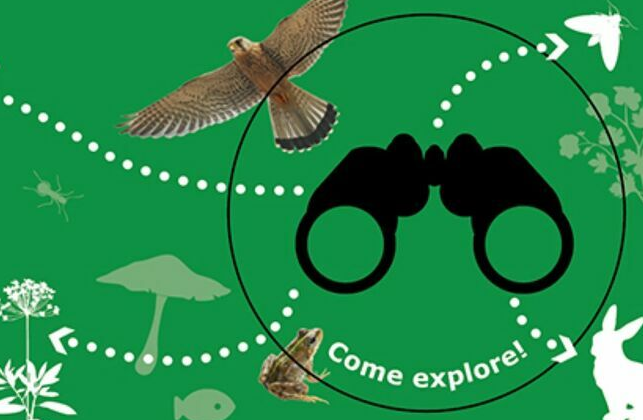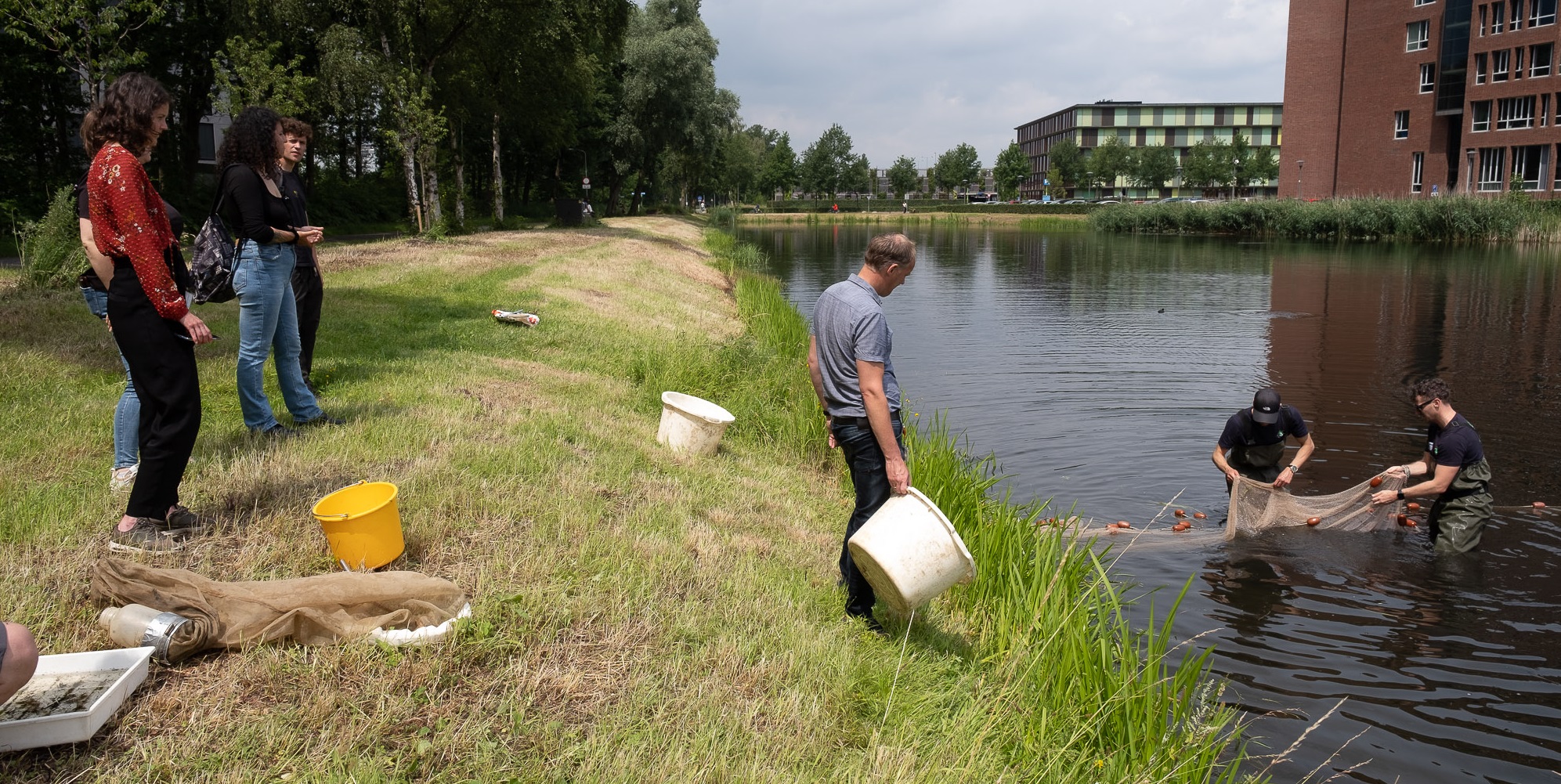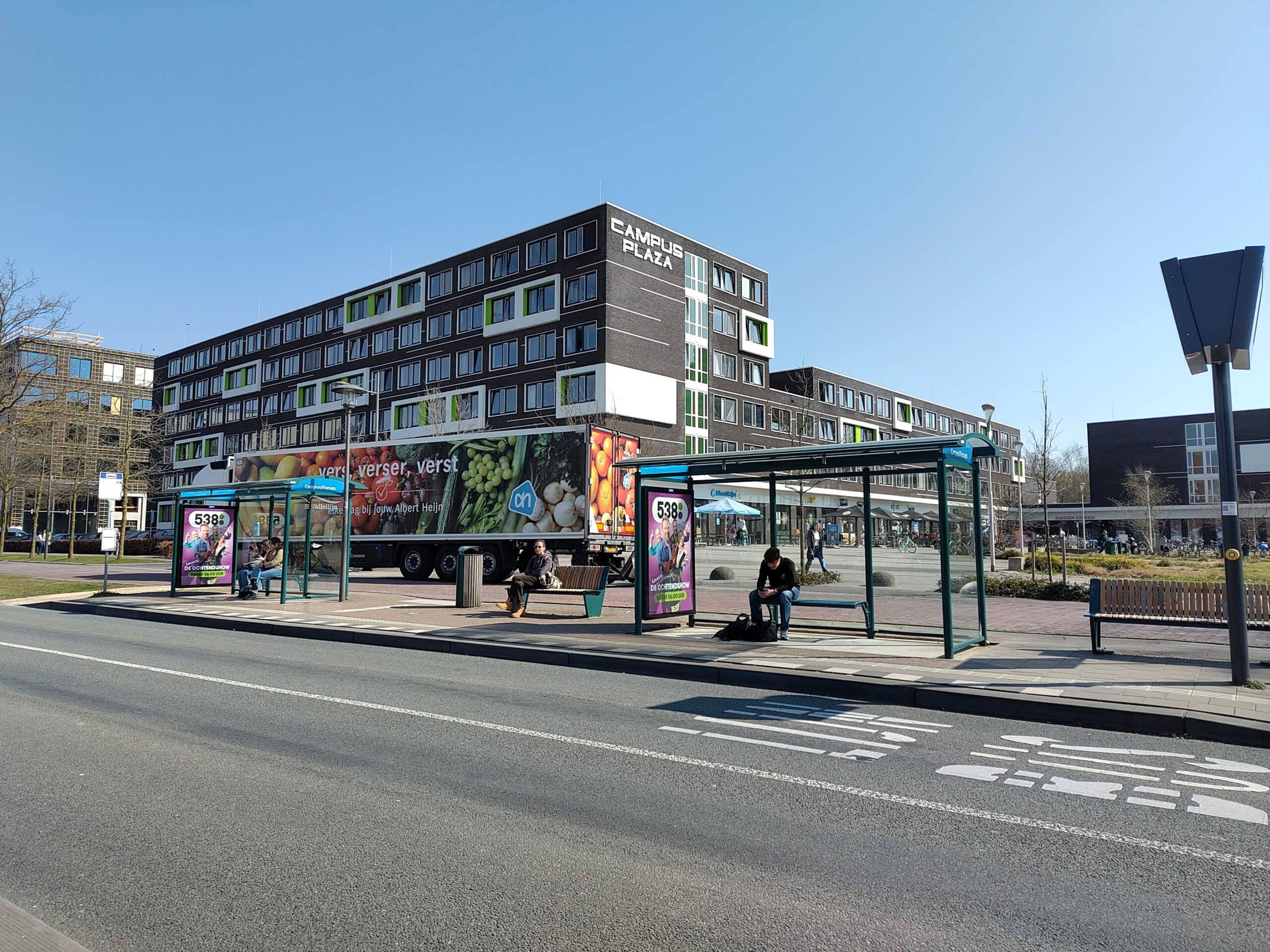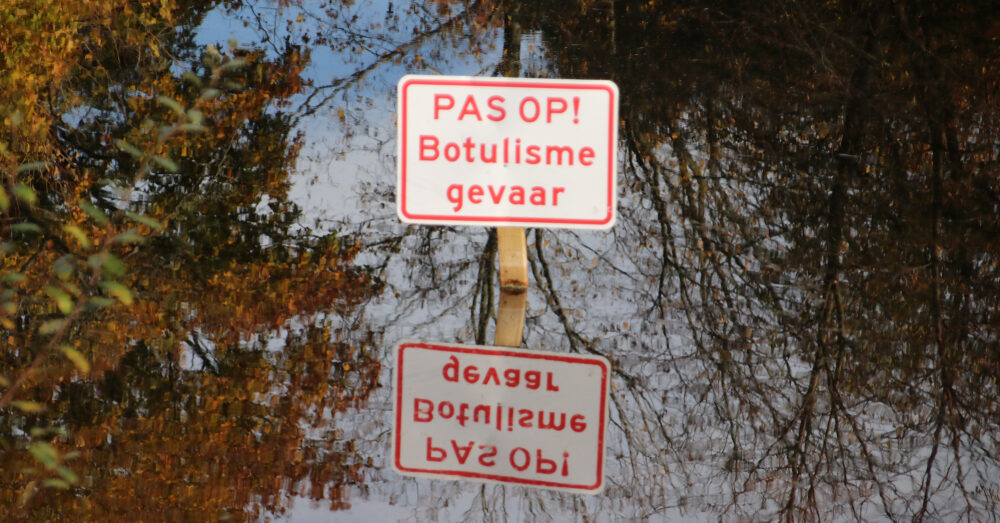You walk, cycle or drive past it every day. But what species actually grow, fly and crawl on the campus? Two hundred volunteers and a small army of experts are afoot today and tomorrow to record precisely that. The Diversity Challenge kicked off in Omnia this afternoon.
Thus, teacher Casper Quint’s idea has become a reality. Quist proposed the idea to professor Liesje Mommer, who leads the Wageningen Biodiversity Initiative. She got the executive board’s enthusiasm and approval, and, just like that, a new Wageningen challenge was born.
Lumen roof
Although the focus of the inventorying is tomorrow (Saturday), groups are already scouring the campus this afternoon, searching for insects, plants, birds, fungi, small mammals, and soil and water life. Doctoral candidate Eva Drukker leads a small group up the roof of Lumen.
Lumen is one of the campus’ buildings with a green roof. NIOO, and, more recently Omnia, have also been fitted with such a roof. A veritable smorgasbord of biodiversity can be found on these roofs. Drukker is eager to explain the benefits of green roofs. In her research, she studies what insects inhabit such urban roofs and how they form a biotope.

Dandelion
But the insects on the Lumen roof disappoint. A single bee buzzes around, and a spider mite crawls over a sedum plant. At the edge of the flowerbed is a lonely dandelion. Exotic? ‘No, this is excellent’, says Dekker. ‘Don’t remove it. Many people tend to weed out exotics, but you really shouldn’t. They are good for the roof’s ecosystem.’
The Biodiversity Challenge’s goal is to identify 1000 species. That may seem like a lot, but it really is not. Alumnus Nika van de Meijracker inventoried the plant diversity on campus for her master’s thesis two years ago. She tells the audience at the opening of the challenge in Omnia that she found almost 300 unique types. The heat-map of her findings is particularly interesting.
Omnia
The map shows that the eastern part of the campus is the richest in plant breeds by far. And that is precisely the spot where WUR has built Omnia. In revealing this, she unintentionally strikes a nerve. Campus development and biodiversity seldomly go well together.

 Participants during the Biodiversity Challenge today. Photo Guy Ackermans
Participants during the Biodiversity Challenge today. Photo Guy Ackermans 

